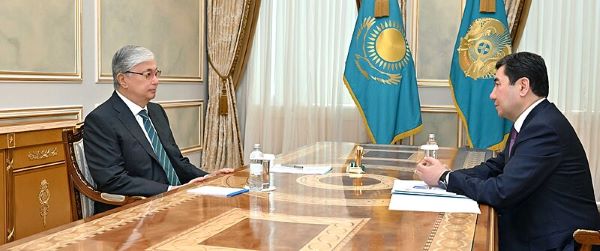
But the main feature of this event is not denied by anyone – the main participants of these events were workers, the ‘Karapayim Halyk’ (‘ordinary people’), who demanded only an improvement in their lives and nothing more.
In 1905, Leon Trotsky witnessed the unsuccessful first Russian revolution, which struck him to the core. Despite the fact that it did not lead to any major changes in society, Trotsky saw that, having started the revolution as a labour strike, workers were able to lead absolutely all strata of the population into revolution. With this deeply impressed on his mind, he wrote the work, ‘Our Revolution’, where he concluded that by fighting for their rights, the working class could eventually become the leading force that would then take all other strata of underdeveloped Russia with it into the socialist revolution. We are using that title to head this article.
“From a spark a flame will be ignited”
The fifth of January, 2024 marks the second anniversary of the loudest and, without exaggeration, greatest historical event in the history of our republic since the Jeltoqsan. The ordinary people, tired of oppression and exploitation, low wages and high prices, rose first of all in the west of the country, in response to an increase in the price of liquefied gas, and then the movement spread to the whole of our country. Years of hard times had turned the country and our people into a powder keg that only required a small spark to set it off.
Even President Tokayev recognises the real reason for the beginning of Kantar: “In my opinion, many years of unresolved socio-economic problems and general stagnation, which turned into a degeneration of the authorities and society, led to the tragic events. This was visible, as they say, to the naked eye.”
However, at the time, the state was not yet going to appease the people by solving the problems that caused their agitation. At that moment, the workers’ uprising was treated by the military as an attack by terrorists from unknown groups, led by agents of unnamed states. Now, today’s president speaks of an attempted coup d’état by a group of conspirators, with influence among security forces and bandits, in tandem with the same terrorists. The head of the National Security Committee, Karim Masimov, was arrested for treason, after which it was “revealed” that he was a thief and a bribe-taker.
“Biz terrorist emespiz – karapaiym khalykpiz” (‘We are not terrorists – we are ordinary people’) became the slogan of the protesters in response to statements about terrorists.
At the same time, pogroms and looting were started by people completely unknown to the protesters, to which the police did not react at all. For example, the airport was seized, from which the security forces had previously fled. An ordinary woman journalist, Aigerim Tleuzhan, was accused of organising the assault and now languishes in prison.
On 5 January, Russian-led troops of the Collective Security Treaty Organisation (of ‘post-Soviet’ states in Eurasia) were sent into Kazakhstan. At first, Russia called it a Kazakhstan internal affair, but our president convinced these ‘partners’ of the necessity of shooting his own people. The president gave the fateful order to shoot to kill. On 9 January it was announced that 164 citizens had been killed and on 15 January, 225 people were killed across Kazakhstan, 19 of them law enforcers. Now they talk of 255 people dead
The brave law enforcement agencies (who became bolder when they had foreign military at their backs) won crushing victories over protesting “terrorists”. For example, there were four-year-old children like little Aikorkem. In 2023, a court ruled that there was no one responsible for her death, and the mural dedicated to her was painted over a couple of hours after it appeared.
In the west of the country, where the spark that started the conflagration originated, the sports complex in Atyrau was turned into a torture chamber where journalists and workers were beaten to find out who they were allegedly spying for. The transformation of the sports complex into a torture chamber evokes uncanny associations with the times of the Pinochet dictatorship in Chile.
For Kazakhstan socialists, ‘Bloody January’ will become symbolic – a symbol of struggle and freedom, a sign that the people of Kazakhstan will not resign themselves to a hard life and widespread injustice, a sign that those in power do not care about ordinary people. Karapayim Halyk (the common people) is their main fear. For us it is a reminder that without struggle and the unity of the oppressed we will see neither freedom nor change.
Starting as a workers’ uprising, like the Russian revolution of 1905, the spark spread to the whole nation and opened up all the wounds of our society. That is why we, the movement of the Kazakhstan Left, emphasise the struggle of the working class of our beautiful homeland, which alone can lead the fight to end all the problems of every discontented person. Even if you do not see yourself as a worker, don’t turn your back on the working class. Whatever kind of activist you are, whoever you aspire to be, agitate for trade union rights, for higher wages, for a living minimum income and a new, socialist society.
Kazakhstani leftists – in struggle you will achieve your rights!

